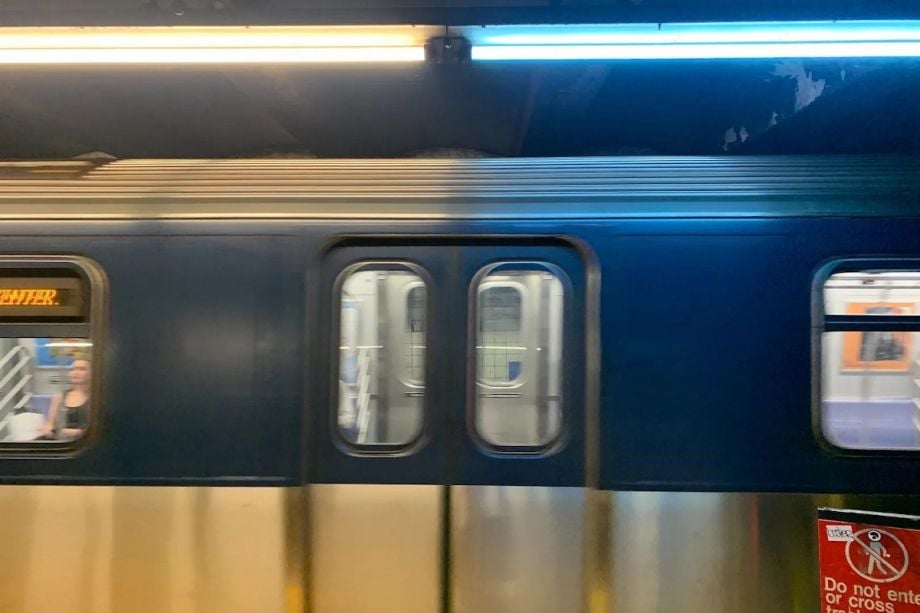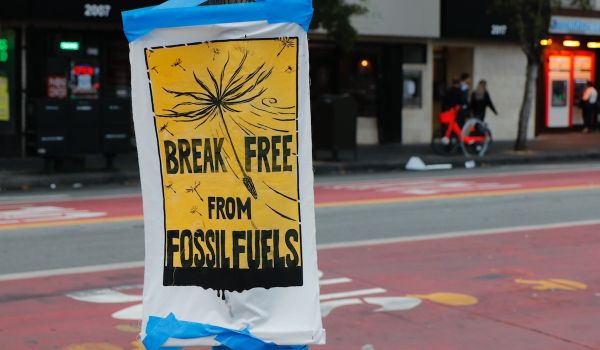This article was originally published by THE CITY, an independent, nonprofit news organization dedicated to hard-hitting reporting that serves the people of New York.
Three subway stations that are among the most prone to people going onto the tracks are the first in the New York City Transit system to test lights that can have a calming effect and deter suicide attempts, THE CITY has learned.
An MTA spokesperson confirmed an internal Department of Subways bulletin obtained by THE CITY that details how the MTA is introducing blue lighting inside stations that have been plagued by a high number of incidents of people going into the path of trains.
“In an ongoing effort to provide customer safety for our subway ridership, Subways is promoting suicide prevention and platform safety by introducing the Track Intrusion Blue Lights pilot program,” the bulletin says. “Studies have shown that blue lighting provides a ‘nudge’ technique that is calming and may prevent customers from jumping and/or trespassing on the right of way.”
The pilot program, which MTA officials and medical professionals outlined at a March meeting of the transit agency’s board, is being put to the test at two subway stations in Manhattan and one in Brooklyn. (THE CITY is not naming the stations or lines based on guidance from health professionals.)
The new-look lights are being installed in the wake of 234 reported incidents of people coming into contact with trains in 2022 — a nearly 25% increase from 2018, according to MTA statistics. It follows the 2019 rollout of similar technology on the Long Island Rail Road, which now has 26 stations equipped with blue platform lights.
THE CITY reported in April 2022 that the two Manhattan stations were among the three stations that in 2021 had the highest number of what the MTA calls “track intrusion” incidents.
At one Manhattan station, several riders said they have not noticed the colored lighting tubes installed at select spots along the platform, but said they welcome efforts to potentially deter people from going onto the tracks.
The Manhattan station had 29 track-trespassing incidents in 2021, MTA data shows, but officials have said the number has been dropping because of “targeted intervention” by the NYPD.
“I think the problem is a little bit deeper when you have a mentally disturbed person,” said commuter Steve Thompson, 50, who travels daily through that station. “You see it, you get all kinds here, so this isn’t a bad place to test it.”
A Huge Decline
The latest MTA Track Trespassing Task Force report cited research from multiple Japanese railway operators that began installing blue lighting on platforms and at railway crossings more than a decade ago, pointing to one study that showed an 84% decrease in the number of suicides over a 10-year period.
“Although further research is needed to verify and characterize the effectiveness of blue lighting as a suicide prevention tool, the MTA has deemed this tool to be promising enough to implement on a limited basis,” the report says.
Michiko Ueda, a Syracuse University associate professor of public administration, took part in multiple studies that found the installation of blue lights by one Japanese railway company at 71 stations resulted in a 84% decrease in suicide attempts between 2000 and 2010 and a 74% drop between 2000 and 2013.
“That’s a huge decline,” Ueda told THE CITY.
She said the lights need to stand out in stations to be most effective.
“If they are [not visible], I don’t think they are effective at all,” she said. “In order to be effective, they have to be very, very bright and visible.”
At a Brooklyn station where the lights have been installed, Will Martin, 23, sat on a bench near one of the blue lights and said he hadn’t detected the change in platform lighting, even after dark.
“I never noticed it at night,” Martin said. “It can’t hurt to try this, I guess, but I feel like it might not do much.”
Detectors, Doors and Signs
Blue platform lights are among several short- and long-term strategies being studied by the MTA as potential deterrents to track intrusion.
While Transport Workers Union Local 100 has criticized the MTA for addressing track intrusion “with the speed of a stalled local train,” the largest union for subway workers backs such efforts.
“Subway suicides are terribly tragic for the individuals and families involved,” said Richie Davis, president of TWU Local 100, in a statement to THE CITY. “They also are incredibly disturbing and traumatic for Train Operators who find themselves unwilling participants in the horror unfolding before their eyes.
“We fully support efforts like these to reduce subway suicides and urge the MTA to move with the greatest urgency.
Others options being looked at include using video analytics technology to send out alerts upon detecting via live security camera footage “dangerous behaviors that could lead to track intrusions,” placing front-facing cameras on trains, and installing track-intrusion detectors that alert train crews and the rail control center when a person or object enters the tracks.
The MTA also plans to begin testing next year of platform screen doors that will be installed at three stations, though the transit agency has acknowledged that solution is not feasible at about three-quarters of the 472 stations in the subway system. Construction of the platform doors at the three stations is set to begin in the coming months, the MTA confirmed this week.
A 3,920-page feasibility study commissioned by the MTA estimated that installing platform screen doors at the 128 stations where they are feasible would cost more than $7 billion, with yearly maintenance costs of close to $120 million.
The studies on the effectiveness of the blue platform lights in Japan noted that they are “easier and less expensive to install” than platform screen doors.
The MTA has already placed signs near tunnels where trains enter stations that read “Your pain is real, but so is hope” and urge people to call or text the 988 suicide and crisis lifeline.
Transit officials and medical professionals have acknowledged the enormous challenge of trying to reduce the number of attempts to end lives in front of moving trains.
“I really like the idea of creating a more calming and more controlled environment in the subway system,” Dr. Charles Marmar, chair of the department of psychiatry at NYU Langone Medical Center, said at the March MTA board meeting. “That’s all very important for safety.”
If you or someone you know needs help, call or text 988 for the 988 Suicide & Crisis Lifeline. You can also reach those services by visiting 988lifeline.org.

Jose Martinez is THE CITY’s transportation reporter. He previously worked on-air for six years at NY1 News, where he also hosted the weekly “In Transit.” He is a veteran of the city’s tabloids, covering courts at the Daily News and the New York Post. He began at the Journal News in Westchester County.
















